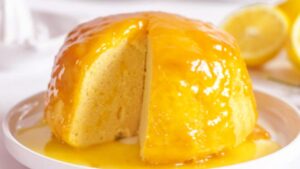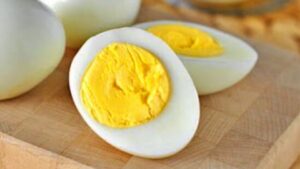How to Make Spotted Dick
How to Make Spotted Dick – A Timeless British Dessert
Spotted Dick is one of Britain’s most cherished traditional desserts, steeped in history and full of charm. Despite its amusing name, this suet pudding with dried fruits is nothing short of delightful. While “dick” is believed to be a colloquial term for pudding or a corruption of the word “dough,” “spotted” alludes to the raisins or currants scattered throughout the pudding. Regardless of its origin, Spotted Dick has held its place as a classic comfort food enjoyed by families for generations.
If you’ve never made this dessert before, you’re in for a treat. Spotted Dick is surprisingly simple to prepare, and the process itself is a rewarding step back into culinary history. This recipe will guide you through every step, ensuring you achieve a perfect pudding that’s moist, fruity, and wonderfully satisfying.

A Brief History of Spotted Dick
Spotted Dick originated in the 19th century, during a time when suet-based puddings were a staple in British households. These steamed puddings were affordable, filling, and made use of ingredients that were readily available. The dessert was often served with custard, which remains its classic pairing today.
While its popularity waned slightly with the rise of modern desserts, Spotted Dick has seen a resurgence in recent years, celebrated for its nostalgic appeal and hearty flavor.
Ingredients for Spotted Dick
To serve 6 people, you will need:
For the pudding:
- 225g (2 cups) self-raising flour.
- 100g (1/2 cup) shredded suet (or cold, grated butter for a vegetarian option).
- 100g (1/2 cup) raisins or currants.
- 50g (1/4 cup) caster sugar.
- 1 teaspoon baking powder.
- One lemon’s zest (optional, for added flavor).
- 150ml (2/3 cup) milk.
- A pinch of salt.
For steaming:
- Butter for greasing.
- A big piece of foil and parchment paper.
- String for tying.
For serving:
- Warm custard (store-bought or homemade).

Step-by-Step Instructions
Step 1: Prepare the pudding mixture
- Combine the dry ingredients: Put the self-raising flour, baking powder, grated butter or shredded suet, and a pinch of salt in a large mixing basin. To uniformly spread the ingredients, give it a good stir.
- Add the fruit and zest: Toss in the raisins or currants and mix them through the dry ingredients. If you’re using lemon zest, add it now for a hint of citrusy brightness.
- Incorporate the milk: Gradually add the milk, stirring with a wooden spoon until the mixture comes together into a soft but not sticky dough. You may need slightly more or less milk depending on the humidity and your flour.
Step 2: Shape the pudding
- Form the pudding: Lightly flour your hands and shape the dough into a round or log-like shape, depending on your preference. Spotted Dick is traditionally cylindrical, but a round pudding works just as well.
- Prepare for steaming: Butter a large piece of parchment paper and a sheet of foil. Place the pudding on the parchment paper, then wrap it up snugly, leaving room for the pudding to expand as it steams. Secure the wrapping with string, tying it firmly but not so tight that the pudding cannot expand.
Step 3: Steam the pudding
- Set up the steamer: Fill a large pot with enough water to come halfway up the side of the wrapped pudding. Place a trivet or an upturned plate at the bottom of the pot to keep the pudding from direct contact with the pot’s base.
- To make the pudding steam, bring the water to a boil and then lower the heat to a low simmer. Place the wrapped pudding in the pot and cover it with a tight-fitting lid. For one and a half to two hours, steam, monitoring often to make sure the water level is still sufficient. When necessary, top with boiling water.
Step 4: Check and serve
-
- Test for doneness: Carefully unwrap the pudding after the steaming time and check that it’s cooked through. A skewer inserted into the center should come out clean.
- Serve immediately: Slice the pudding into generous portions and serve it warm, topped with lashings of creamy custard.
Homemade Custard Recipe
No Spotted Dick is complete without a velvety custard to accompany it. The following is a basic recipe for homemade custard:
Ingredients:
- 500ml (2 cups) whole milk.
- 4 large egg yolks.
- 2 tablespoons caster sugar.
- 1 teaspoon vanilla extract.
- 1 tablespoon cornflour (optional, for a thicker custard).
Instructions:
- Heat the milk: In a saucepan, gently heat the milk until it’s just about to simmer. Do not let it boil.
- Beat the eggs and sugar: Beat the egg yolks, sugar, and cornflour (if using) in a bowl until they are smooth.
- Combine and thicken: Slowly pour the hot milk into the egg mixture while whisking continuously. Return the mixture to the saucepan and heat gently, stirring constantly, until it thickens to your desired consistency.
- Serve the warm custard over the Spotted Dick after adding the vanilla essence and stirring.

Tips for a Perfect Spotted Dick
- Use quality suet: Suet is traditional for Spotted Dick and gives it a rich texture. If you can’t find suet, cold, grated butter works as a good substitute.
- Don’t skimp on the fruit: The raisins or currants provide bursts of sweetness that balance the richness of the pudding.
- Steam properly: Keep the water at a gentle simmer during steaming to ensure the pudding cooks evenly without drying out.
Variations on the Classic Recipe
Spotted Dick is wonderfully adaptable, and you can tweak the recipe to suit your taste:
- Chocolate twist: Add a handful of chocolate chips to the mixture for a modern twist.
- Nutty flavor: Mix in some chopped nuts like almonds or walnuts for added texture.
- Citrus delight: Use orange zest instead of lemon for a sweeter, more fragrant pudding.
The Joy of Spotted Dick
Spotted Dick isn’t just a dessert; it’s a connection to Britain’s culinary heritage. Making it at home is a delightful experience, from preparing the dough to unwrapping the steaming, aromatic pudding. There’s something incredibly satisfying about serving this warm, fruity treat to your family or friends, especially when paired with custard.
While modern desserts often emphasize speed and convenience, Spotted Dick reminds us of the joys of slow cooking and tradition. It’s a dish that brings people together, whether you’re enjoying it at a family gathering or as a cozy indulgence on a quiet evening.
So why not give Spotted Dick a try? Roll up your sleeves, gather your ingredients, and let the magic of this timeless pudding transport you to the heart of British culinary history.
Enjoy every bite!



































